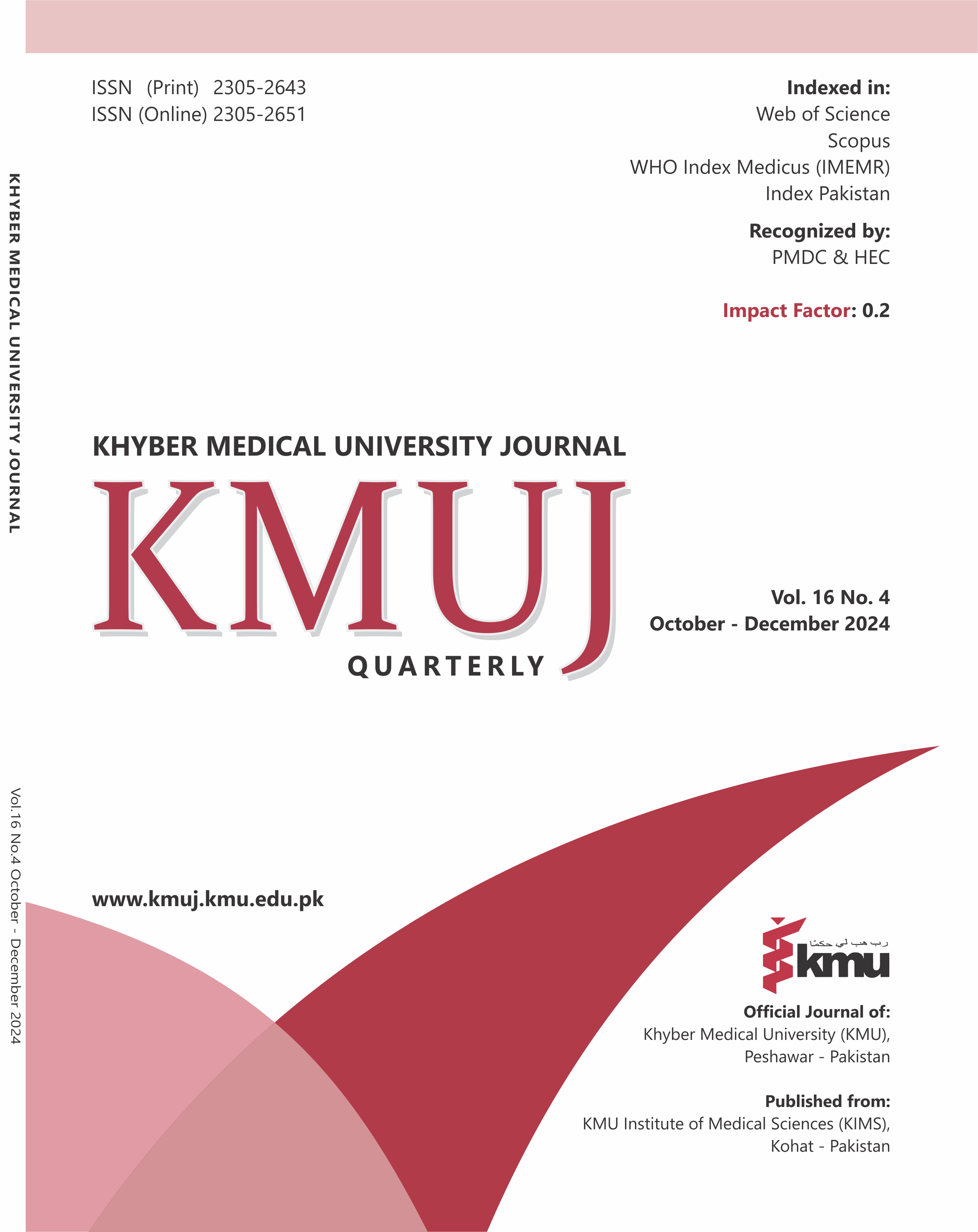Intriguing challenging encounter of Clivus Chordoid Chordoma in a young girl: a case report
Main Article Content
Abstract
Background: Clival chordomas (CC) are rare, slow-growing tumors arising from primitive embryonic notochordal remnants, typically in the spheno-occiput, sacrococcygeal region, and clivus. They are slow-growing, locally aggressive tumors with limited metastatic potential and usually present with symptoms like headache, diplopia, and cranial nerve palsies. Diagnosis relies on MRI and histopathological examination with immunohistochemistry to distinguish them from chondrosarcoma.
Case presentation: A five-year-old girl presented with a four-month history of diplopia and right-sided hemiparesis. MRI revealed a hyperintense lobulated mass at the skull base, compressing the spinal cord without cervical vertebral erosion. Post-contrast imaging demonstrated heterogeneous enhancement. A comprehensive baseline evaluation, including a metastatic assessment to exclude distant spread, was conducted. Preoperative assessment was subsequently performed during a tumor board meeting involving oncologists, pathologists, anesthesiologists, and radiologists. Based on these evaluations, a gross total resection of the tumor was planned. Differential diagnoses included chordoma and chondrosarcoma, with ecchordosis physaliphora excluded radiologically. Under general anesthesia, the tumor was successfully resected via a transoronasal approach. Histopathological examination revealed lobules of large cohesive cells within abundant myxoid stroma, consistent with a diagnosis of chondroid chordoma. Immunohistochemical staining demonstrated diffuse positivity for S100 and CK, effectively ruling out chondrosarcoma.
Conclusion: This case highlights the clinical, radiological, and histopathological features of CC and emphasizes the importance of immunohistochemical markers for accurate diagnosis. Complete surgical resection remains the mainstay of treatment, complemented by adjunctive radiotherapy for optimal management of this rare tumor.
Article Details

This work is licensed under a Creative Commons Attribution 4.0 International License.
Work published in KMUJ is licensed under a
Creative Commons Attribution 4.0 License
Authors are permitted and encouraged to post their work online (e.g., in institutional repositories or on their website) prior to and during the submission process, as it can lead to productive exchanges, as well as earlier and greater citation of published work.
(e.g., in institutional repositories or on their website) prior to and during the submission process, as it can lead to productive exchanges, as well as earlier and greater citation of published work.
References
1. Pagella F, Ugolini S, Zoia C, Matti E, Carena P, Lizzio R, et al. Clivus pathologies from diagnosis to surgical multidisciplinary treatment. Review of the literature. Acta Otorhinolaryngol Ital 2021;41(Suppl 1):S42-S50. https://doi.org/10.14639/0392-100Xsuppl.1-41-2021-04
2. Ulici V, Hart J. Chordoma: a review and differential diagnosis. Arch Pathol Lab Med 2022;146(3):386-95. https://doi.org/10.5858/arpa.2020-58-RA
3. Rai R, Iwanaga J, Shokouhi G, Loukas M, Mortazavi MM, Oskouian RJ, et al. A comprehensive review of the clivus: anatomy, embryology, variants, pathology, and surgical approaches. Child's Nerv Syst 2018;34(8):1451-8. https://doi.org/10.1007/s00381-018-3875-x
4. Noya C, D’Alessandris QG, Doglietto F, Pallini R, Rigante M, Mattogno PP, et al. Treatment of clival chordomas: a 20-year experience and systematic literature review. Cancers (Basel) 2023;15(18):4493. https://doi.org/10.3390/cancers15184493
5. Rassi MS, Hulou MM, Almefty K, Bi WL, Pravdenkova S, Dunn I et al. Pediatric clival chordoma: a curable disease that conforms to collins' law. Neurosurgery 2018;82(5):652-60. https://doi.org/10.1093/neuros/nyx254
6. Bilginer B, Türk CÇ, Narin F, Hanalioglu S, Oguz KK, Ozgen B, et al. Enigmatic entity in childhood: clival chordoma from a tertiary center’s perspective. Acta Neurochir 2015;157(9):1587-93. https://doi.org/10.1007/s00701-015-2510-9
7. Zhai Y, Bai J, Gao H, Wang S, Li M, Gui S, et al. Clinical features and prognostic factors of children and adolescents with clival chordomas. World Neurosurg 2017;98:323-8. https://doi.org/10.1016/j.wneu.2016.11.015
8. Erazo IS, Galvis CF, Aguirre LE, Iglesias R, Abarca LC. Clival chondroid chordoma: a case report and review of the literature. Cureus 2018;10(9):e3381. https://doi.org/10.7759/cureus.3381
9. Ullah A, Kenol GS, Lee KT, Yasinzai AQ, Waheed A, Asif B, et al. Chordoma: demographics and survival analysis with a focus on racial disparities and the role of surgery, a US population-based study. Clinic Transl Oncol 2024;26(1):109-18. https://doi.org/10.1007/s12094-023-03227-0
10. Gohar R, Rehman L, Javeed F, Bokhari I, Qasim A, Altaf S. Radiologic–histopathologic: correlation of intracranial tumors operated in a tertiary care hospital: a prospective study. Pak J Neurol Surg 2023;27(1):14-20. https://doi.org/10.36552/pjns.v27i1.813
11. Dickerson TE, Ullah A, Saineni S, Sultan S, Sama S, Ghleilib I, et al. Recurrent metastatic chordoma to the liver: a case report and review of the literature. Curr Oncol 2022;29(7):4625-31. https://doi.org/10.3390/curroncol29070367
12. Kamboh UA, Manzoor M, Gulshan A, Rauf A. The outcome of multidisciplinary treatment of spinal tumors: institutional experience of a tertiary care hospital. Pak J Neurol Surg 2022;26(4):589-96. https://doi.org/10.36552/pjns.v26i4.806
13. Imran M, Khan AA, Younus SM. Cervical chordoma involving C3/C4: A case report. J Pak Med Assoc 2016;66(12):1659-61.
